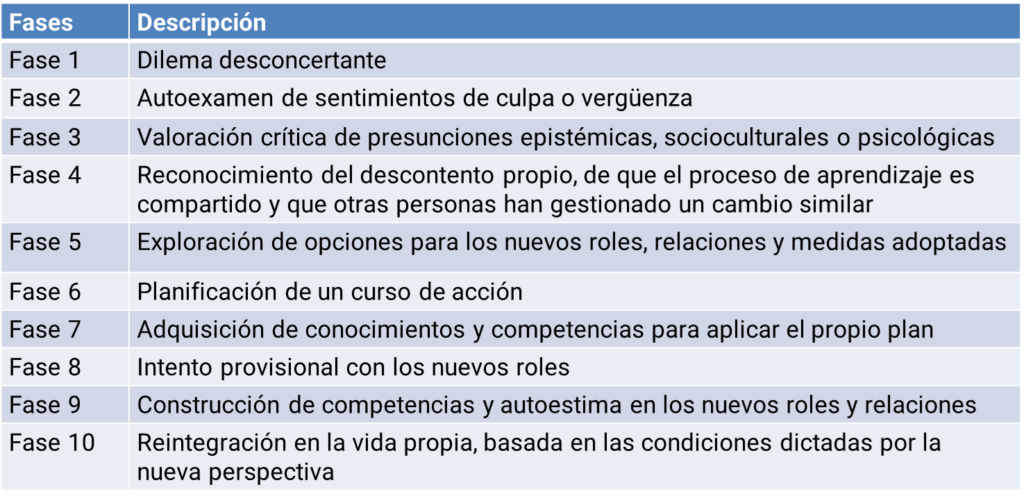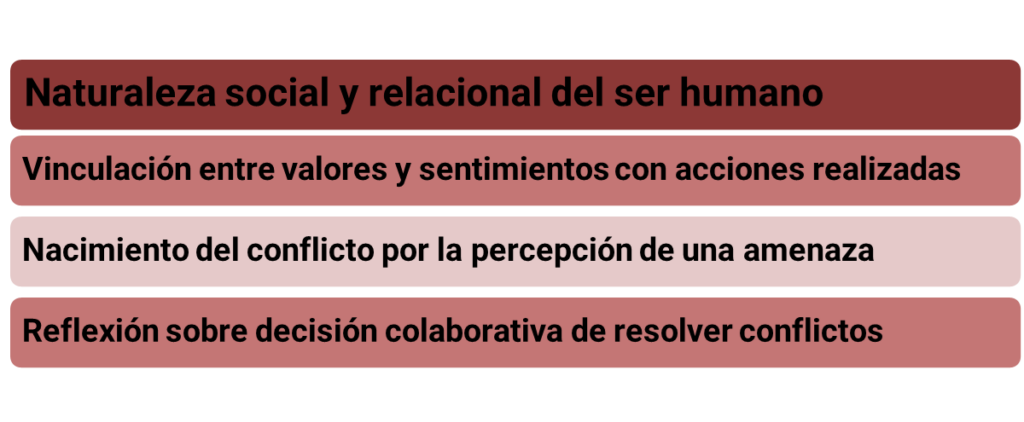
The insight mediation is a conflict mediation model developed since 2001 in the Canadian city of Ottawa, based on a joint research project between Professor Cheryl Picard, from Carleton University, and Professor Kenneth Melchin, from Saint Paul University. The origins of this school date back to the first's doctoral research, in which he pointed out how traditional approaches in mediation respond to dualistic and dichotomous classifications (Picard, 2000). This approach conceives the mediating intervention as an interactive learning process for all participants (including its driver). It is based on two philosophical and pedagogical theories that privilege personal reflection as a way to achieve knowledge: Lonergan's theory of insight and Mezirow's theory of transformational learning. Based on these theoretical bases, its founders have developed a process that uses specific communication techniques to overcome conflict, which is conceived as the experience of a threat to the person's most intimate convictions. Finally, the consolidation of this approach for more than a decade makes it possible for it to be considered as a candidate to become the fourth major mediation school at the international level (Garrido, 2017).
Principles and features

- An insight It can be defined as an “act of understanding that occurs unexpectedly” (Lonergan, 2004, p. 11). Set of mental operations that allow the person to become aware of themselves in a double sense: as an act of will and as the knowledge it acquires. According to this proposal, an insight arrives unexpectedly and unforeseen, but not by chance.
- The learning process consists of an itinerary of ten stages or phases, whose point It is the discontent and frustration caused by the recognition of a limitation that hinders one's own personal development. AND concludes at the time the person takes awareness of the change experienced in the management of his own experience and is thus able to express it through critical and rational discourse.

It is advisable to make known that the person The mediator cannot do anything about the parties, but they are encouraged during the mediation process to reflect on their own feelings., concerns and values so that the true reason why the conflict occurs is revealed.
Thus, the starting point of this mediational learning process is that the Conflict is real (and inevitable), that arises as a result of the decision to defend oneself against the assessment of a threat. This threat manifests itself in a defensive response pattern (Melchin and Picard, 2008; Picard, 2016).
In this way, the defensive patterns of interaction are interpreted by the other party as an attack, and vice versa, which leads to an escalation of the conflict. This defense mechanism helps us protect ourselves, but it also prevents us from opening up to possible alternatives.
Principles of the insight model:


In short, we can say that there is enough evidence for insight mediation to be considered the fourth great school of mediation on the international scene. A comparison between the different schools may be sufficient to discover the distinctive hallmarks of each of them (Waxman, 2009), however it is more appropriate to focus on their most characteristic quality, which is nothing more than curiosity. We can conclude that curiosity in mediation consists of a personal effort "to discover what has meaning and value for the other, to give them the floor and to express the background of your roles, their statuses, their beliefs, always interpreted in a unique way by the individual" (Tabares, 1996, p. 146). Therefore, any conflict can be addressed based on this mediation model.
If you want to train in mediation, choose to enroll in the number 1 school in the mediation sector.




